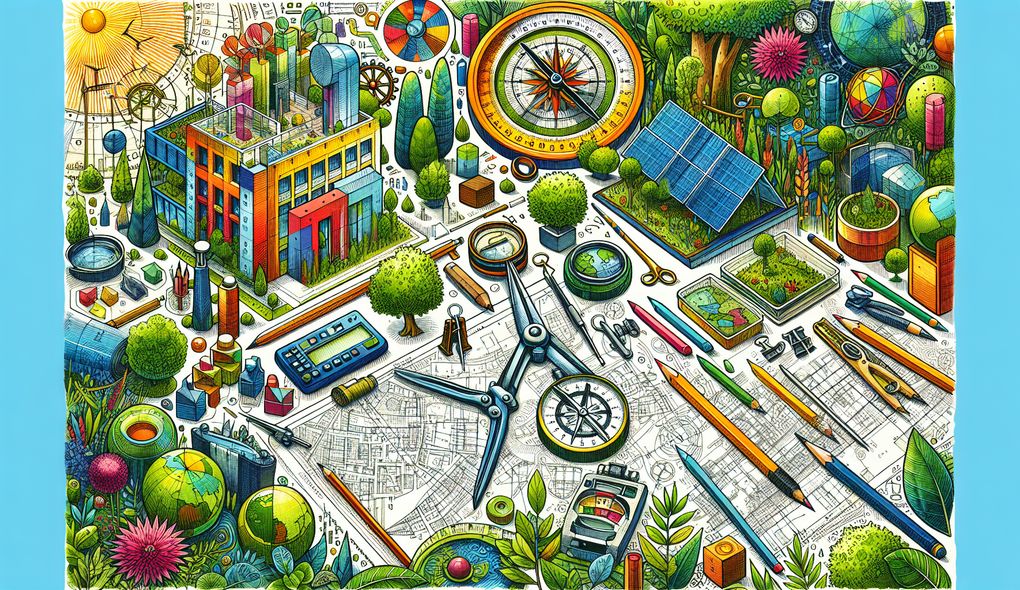What role does analytical thinking and attention to detail play in environmental design?
INTERMEDIATE LEVEL

Sample answer to the question:
Analytical thinking and attention to detail are crucial in environmental design. By carefully analyzing the project requirements and considering the environmental impact, designers can create sustainable and engaging spaces. Attention to detail is important for visualizing the spaces and ensuring that every element contributes to the overall design. For example, an environmental designer may need to carefully select materials that are eco-friendly and meet sustainability standards. Additionally, analytical thinking helps designers assess the impact of their designs on the environment and make informed decisions. Overall, analytical thinking and attention to detail enhance the quality of the design and ensure that it aligns with sustainability goals.
Here is a more solid answer:
Analytical thinking and attention to detail play a critical role in environmental design. Designers need to analyze project requirements, consider the environmental impact, and integrate sustainability principles. For instance, when selecting materials, attention to detail ensures that eco-friendly and sustainable options are chosen. Analytical thinking helps designers assess the impact of their designs on the environment and make informed decisions. By carefully considering every element, from lighting to landscaping, designers create spaces that enhance the quality of life and protect natural resources. Overall, analytical thinking and attention to detail are essential for creating sustainable and engaging environments in environmental design.
Why is this a more solid answer?
The solid answer expands on the basic answer by providing specific examples and details to illustrate the importance of analytical thinking and attention to detail in environmental design. It demonstrates a deeper understanding of how these skills contribute to creating sustainable and engaging environments.
An example of a exceptional answer:
Analytical thinking and attention to detail are fundamental aspects of environmental design. Designers must have a keen eye for detail to visualize spaces and ensure that every element aligns with the overall design concept. For instance, analyzing project requirements enables designers to integrate environmental sustainability seamlessly with aesthetic value. They meticulously select materials that are not only eco-friendly but also contribute to the design's visual appeal. By thoroughly researching new materials and techniques, designers stay updated on the latest advancements in environmental conservation. Analytical thinking empowers them to assess the environmental impact of their designs comprehensively. They consider factors such as energy efficiency, water conservation, and waste reduction. This holistic approach ensures designs that enhance quality of life for communities while preserving natural resources. Furthermore, attention to detail is crucial in preparing and presenting project proposals. Designers create visual presentations and written reports that communicate their ideas effectively. Analytical thinking allows them to articulate the environmental benefits and showcase how the design aligns with sustainability goals. Ultimately, it is the combination of analytical thinking and attention to detail that enables environmental designers to create harmonious spaces that foster sustainability and well-being.
Why is this an exceptional answer?
The exceptional answer builds upon the solid answer by providing even more specific examples and details. It highlights the importance of attention to detail in various aspects of environmental design, such as material selection and proposal preparation. It also emphasizes the holistic approach that analytical thinking enables, considering factors beyond the immediate visual impact. The exceptional answer provides a comprehensive understanding of how analytical thinking and attention to detail contribute to the creation of sustainable and engaging environments.
How to prepare for this question:
- Familiarize yourself with sustainable design principles and best practices in environmental conservation. Research current trends and advancements in the field.
- Develop your analytical thinking skills by practicing problem-solving exercises and critically analyzing design projects.
- Pay attention to details in your past design projects. Reflect on how each element contributes to the overall design concept and sustainability goals.
- Practice visualizing spaces and considering the environmental impact of design decisions. Look for opportunities to integrate aesthetics and sustainability seamlessly.
- Improve your presentation skills to effectively communicate your design ideas and showcase the environmental benefits of your work.
What are interviewers evaluating with this question?
- Analytical thinking
- Attention to detail

